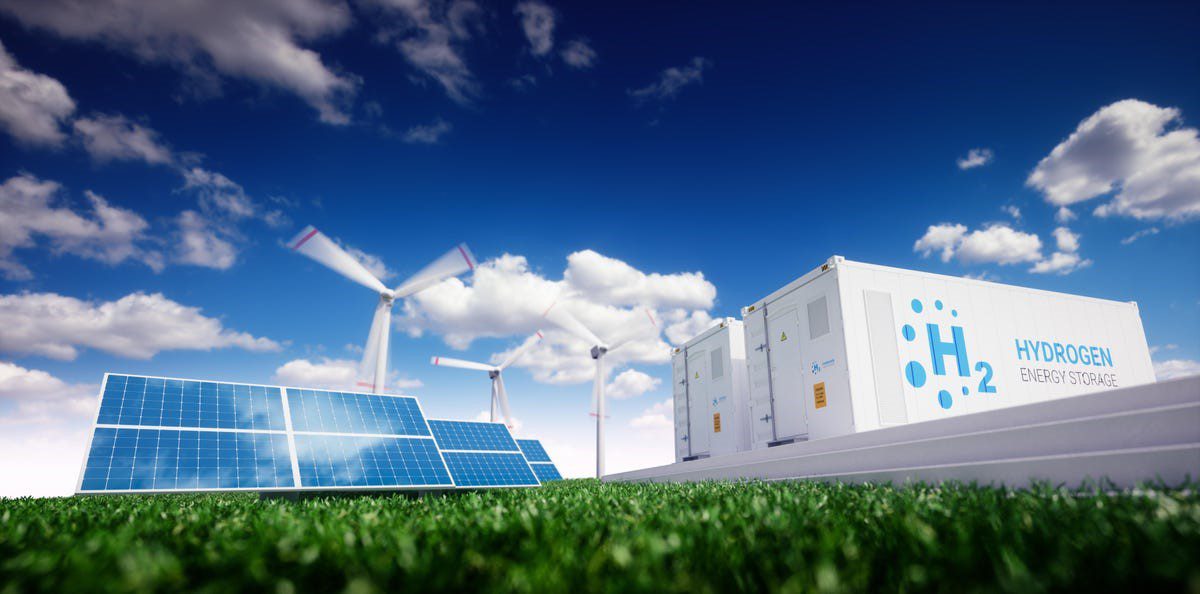The Indian construction sector is one of the biggest in the world and plays a vital role in the country’s economic growth. However, the market is also one of the most energy-consuming sectors, contributing significantly to greenhouse gas emissions.
India’s construction sector must adopt sustainable practices as the world transitions to a more sustainable future. Additionally, green hydrogen is one technology that can aid in this transition.
As discussed, the reliance of the construction market on fossil fuels is quite evident. As a result, it escalated greenhouse gas emissions, air pollution levels, and environmental degradation overall. Here’s where green hydrogen would come into play.
Adoption of the same would carry the potential to reduce carbon footprint. Subsequently, such efforts would contribute to the nation’s efforts towards attaining the climate change improvement goals.
Hence, this technology could transform how we generate and consume energy. Above all, India, with its abundant renewable energy resources, can become a key player in this sector.
Why Adopt Green Hydrogen for Construction? Top 3 Reasons
Green Hydrogen is considered a breakthrough innovation in the construction industry. But for what reasons? Keep reading below to learn about the same.
A. Facilitating Operations
Green hydrogen carries the great potential of making the construction industry sustainable-oriented. To illustrate, adopting green hydrogen can facilitate power generation for heavy machinery.
Consequently, its implication would encourage brands like JCB machine to engineer their equipment to support green hydrogen operations.
Furthermore, it can power a wide product category range, including excavators, backhoe loaders, dozers, cranes, and so forth.
So, why replace the fuel type? Well, the reason is quite simple to understand. Diesel engines, a major contributor to toxic pollutants, usually power these heavy machines.
Therefore, the infra industry can significantly reduce its carbon footprint by replacing diesel with green hydrogen. Overall, this would lead to cleaner air in surrounding areas.
B. Facilitating Remote Regions
The limited grid connectivity in remote areas makes heavy-duty machine operations challenging. For instance, these sites solely rely on diesel generators for power generation.
Additionally, this model, apart from being a source of pollution, is further expensive. This is why reducing diesel dependency and replacing it with green hydrogen becomes important.
C. Cost-Reduction
As the name suggests, green hydrogen exists to reduce environmental degradation. However, it does serve a major goal as well. That goal is about saving operating costs. Now here’s a point to consider:
The installation cost of green hydrogen may be on the higher end. However, its operating price is significantly lower than its counterparts. This is because green hydrogen is a renewable and abundant source of energy.
As a result, this source does not require expensive imports or extraction costs.
More importantly, green hydrogen can be produced locally. Consequently, this method reduces the transportation costs associated with conventional fossil fuels.
Hence, this initiative can help professionals save costs in the long run.
Tracing the Present Development & Futuristic Scope
A. The Present Scenario
India is already making significant strides in renewable energy generation. To illustrate, the nation plans to thrive with a target of attaining 450 GW of renewable energy by 2030.
Such an ambitious yet realistic target presents a massive opportunity for developing green hydrogen technology in the country.
With abundant renewable energy sources integrated into the grid, the extra energy can be converted into green hydrogen, which has a variety of applications, including construction.
B. Further Planning
The Indian government has further acknowledged the potential of green hydrogen in the Indian construction market. Subsequently, it resulted in the authorities announcing plans to develop a national hydrogen mission.
This agenda focuses on drafting policies & regulatory frameworks to back green hydrogen & encourage private investment in this regard. For instance, the aim is to promote R&D while supporting the development of hydrogen-fuel-equipped construction equipment.
Additionally, this change could further impact the cost of construction machine, for instance, JCB price. The govt is further planning to promote this technology across various sectors.
Moreover, hydrogen technology will call for major investments in infrastructure. Nevertheless, it would be the ROIs that would outshine the operating cost.
Final Thoughts
In this blog, we walked you through the reasons why adopting green hydrogen is a worthwhile investment in the construction industry. Furthermore, we discussed the present scenario and future planning by the govt concerning green hydrogen technology.
In conclusion, green hydrogen presents a massive opportunity for the Indian construction sector to transition to a more sustainable future.
By adopting this technology, the industry can significantly reduce its carbon footprint, contribute to cleaner air in urban areas, and save on costs in the long run.
With the Indian government’s focus on promoting green hydrogen, the time is ripe for the construction sector to embrace this technology.

As the editor of the blog, She curate insightful content that sparks curiosity and fosters learning. With a passion for storytelling and a keen eye for detail, she strive to bring diverse perspectives and engaging narratives to readers, ensuring every piece informs, inspires, and enriches.










